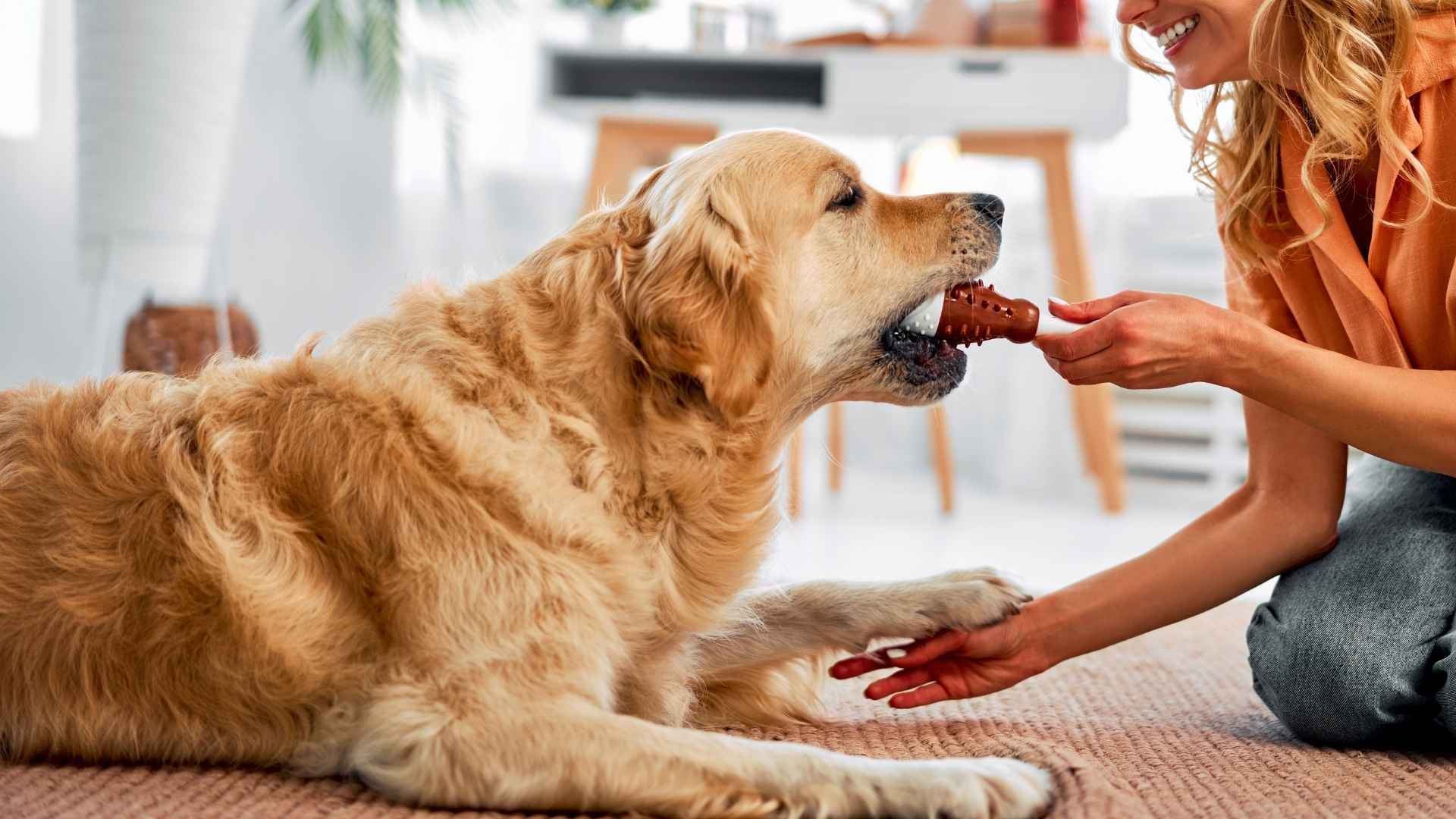Some dogs express affection in quiet ways, while others choose to make their feelings visible. Certain breeds have a habit of picking up toys, carrying them across the room, and placing them into their owner’s hands or lap.
This action isn’t random—it’s a gesture shaped by instinct, intelligence, and the strong bond they share with their families. Retrievers may bring soft toys because their genetics compel them to hold and deliver objects gently, while companion breeds might offer a favorite squeaky toy as an invitation to interact.
In each case, the toy becomes a simple but meaningful message, a tangible “I love you” translated into behavior. This article looks at ten dog breeds known for this habit, exploring the history, temperament, and instincts that lead them to deliver their prized possessions to the people they trust most.
Dog Breeds That Bring Toys to Owners to Say “I Love You”
1. Border Collie
The Border Collie is celebrated as one of the world’s most intelligent dogs, bred on the borderlands of Scotland and England to gather and guide sheep with precision. According to the AKC, their sharp minds and constant readiness to act make them masters of expressing themselves through movement—and sometimes through the simple act of carrying a toy across the room.
Their coats can be rough or smooth, sometimes with feathering along the legs and tail. A weekly brushing session keeps their fur in top shape and controls shedding from their thick undercoat.
Training feels more like collaboration than instruction for this breed. They respond instantly to cues, eager to add new skills, games, or commands to their mental library.
The energy is endless; they run, twist, and leap with startling speed, often swooping down on a toy like it’s part of their “flock.”
Medium-sized but athletic, they slip between furniture and into laps with a toy clamped in their mouth, an offering that’s as instinctive as it is affectionate.
Fun Fact
A Border Collie named Chaser learned and recognized the names of more than 1,000 toys, earning the title “the smartest dog in the world.”
2. Beagle
The Beagle is a merry little hound with an outsized sense of curiosity, developed in England for pack hunting and trailing rabbits. Their affectionate nature and constant tail-wagging make them one of the most charming dogs to share a home with, and they often announce their love by presenting a toy with dramatic enthusiasm.
The nose drives almost every choice they make. Centuries of scent work left them following invisible trails and sometimes delivering their “finds”—a favorite toy, a slipper, or whatever they picked up—to their humans.
Their short coat needs little upkeep, but their long ears require regular attention to avoid infections. Brushing once or twice a week is enough to keep the coat smooth and comfortable.
Training can be a puzzle because every smell is a distraction. Tasty rewards and quick sessions help keep their minds on the lesson long enough to succeed.
Beagles carry toys almost like trophies, often trotting proudly into the room as if to say they’ve found something wonderful just for you.
Fun Fact
Beagles’ powerful noses are so trusted that U.S. Customs uses “Beagle Brigades” to sniff out prohibited foods in airports.
3. Labrador Retriever
The Labrador Retriever is a natural retriever in every sense, built for swimming, carrying, and delivering. Originating in Newfoundland, they worked with fishermen before becoming the world’s favorite family dog, and their habit of carrying toys is simply an extension of their history.
Purina states that their double-layered coat insulates them in cold water but sheds heavily year-round. A firm brushing a few times a week keeps the fur manageable and healthy.
Labs are athletic and strong, launching into water, bounding over fences, and trotting across the yard with something in their mouths. That “something” is often a soft toy they’ll happily place in your lap.
They’re famously friendly and thrive on connection, greeting strangers and family alike with the same wagging, toy-filled enthusiasm.
Long walks, fetch marathons, and swims keep them balanced. Without that outlet, they invent “jobs,” usually by collecting whatever they can and bringing it to you for approval.
Fun Fact
The Labrador Retriever has been the most popular dog breed in the United States for over 30 years straight.
4. Golden Retriever
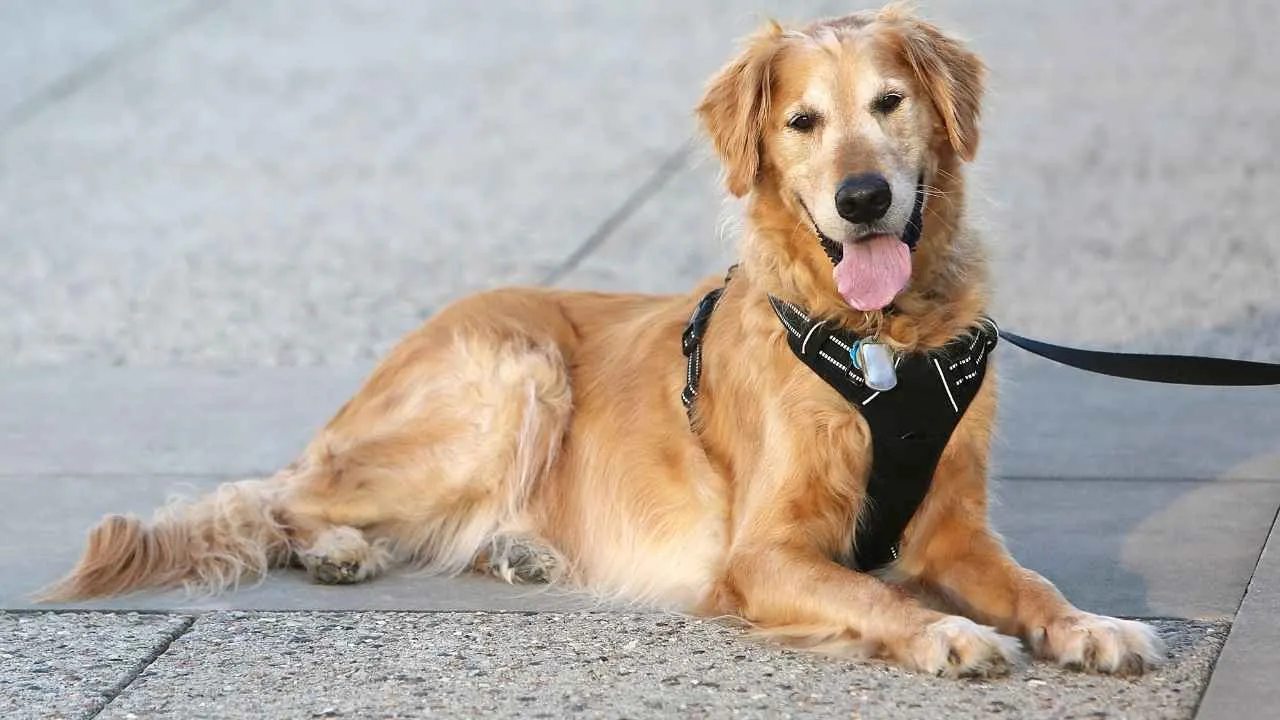
The Golden Retriever embodies warmth and devotion, originally bred in Scotland to retrieve birds from land and water with a gentle “soft mouth.” That heritage is still visible every time a Golden carefully carries a toy over and drops it into waiting hands.
Their flowing golden coats shed steadily and require several brushing sessions each week to prevent mats. Grooming also helps distribute natural oils, keeping their fur shining and healthy.

Golden Retrievers read emotions effortlessly. When they bring you a plush duck or squeaky bone, it can feel like an offer of comfort or an invitation to joy.
They crave activity and love to swim, hike, and fetch. That endless appetite for play fuels their habit of retrieving toys again and again.
Goldens are large and powerful but soft in demeanor, padding quietly through the house to find the toy they think you’ll want most.
Fun Fact
A Golden Retriever named Buddy played basketball, football, and baseball on screen in the Air Bud movie series, showing off the breed’s eagerness to please.
5. Jack Russell Terrier
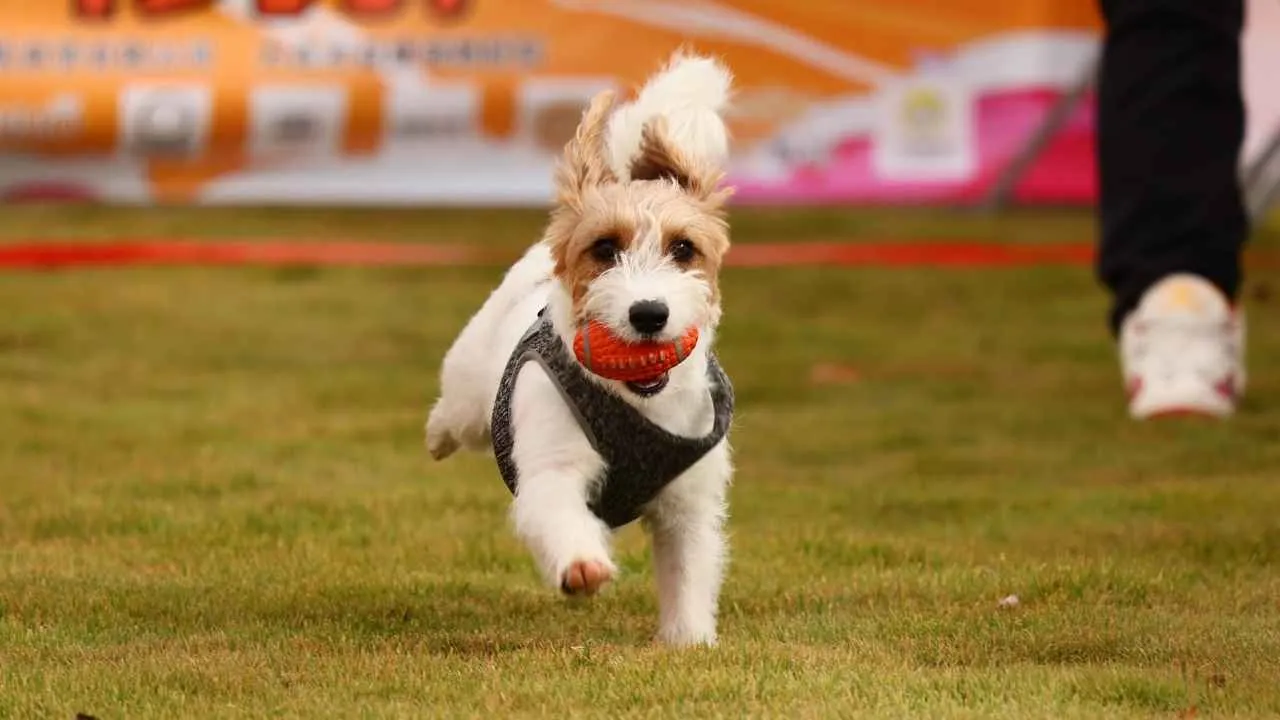
The Jack Russell Terrier is a spark of energy in a compact frame, originally bred in England for fox hunting. Their determination and sharp instincts remain obvious today—they grab toys, leap onto the couch, and proudly drop their “catch” into a waiting hand without hesitation.
The breed’s intensity is legendary. A Jack Russell doesn’t simply bring a toy; they zoom, dart, and twist their way through the house to deliver it like it’s the day’s greatest discovery.
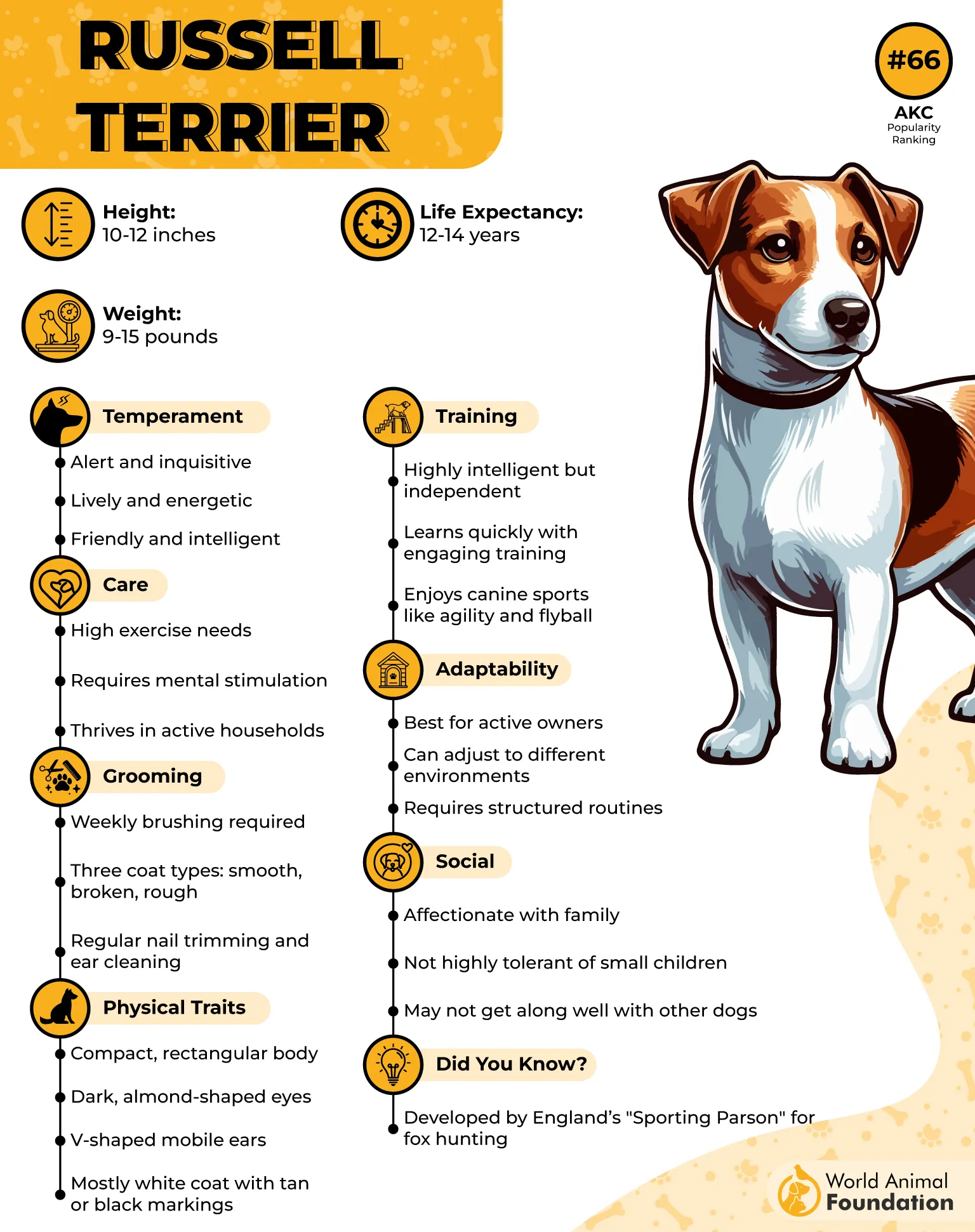
Their training must match their brainpower. Britannica states that short, entertaining, and varied lessons hold their attention.
Their smooth or rough coat sheds lightly and only needs brushing once a week. The real challenge is channeling their endless energy—long walks, running games, and puzzle toys keep them happy.
Jack Russells thrive on connection, and a toy they carry across the room is more than just something to fetch—it’s their way of sharing joy, movement, and maybe a little mischief all at once.
Fun Fact
Jack Russells have been frequent stars of film and television, with “Eddie” on Frasier becoming one of TV’s most iconic dogs.
6. Boxer
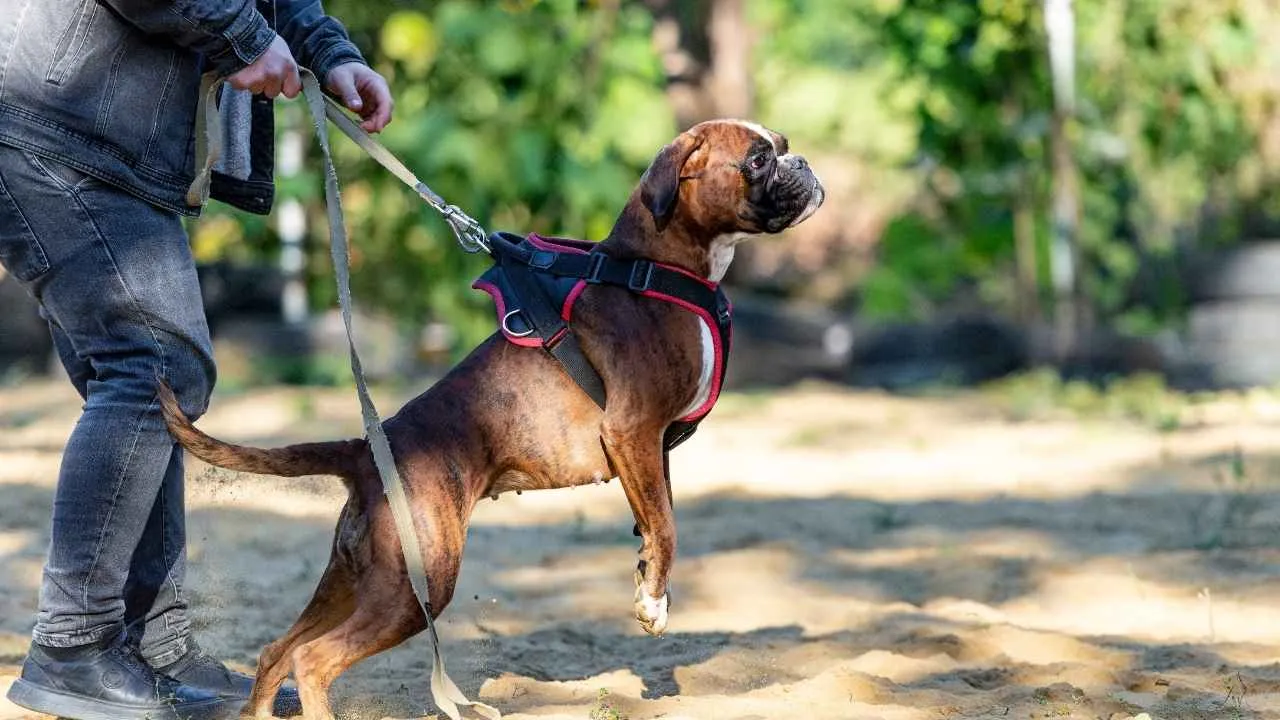
Boxers are joyful extroverts with boundless charm, originally bred in Germany as working dogs with both strength and agility. Their habit of trotting over with a slobbery toy in their mouths comes from that blend of brawn, playfulness, and constant engagement.
Their athletic build is unmistakable—lean muscle under a short, smooth coat that barely needs more than a weekly brushing. That body isn’t built for rest; it’s built for motion, even if the motion is a goofy prance with a plush, squeaky bone.
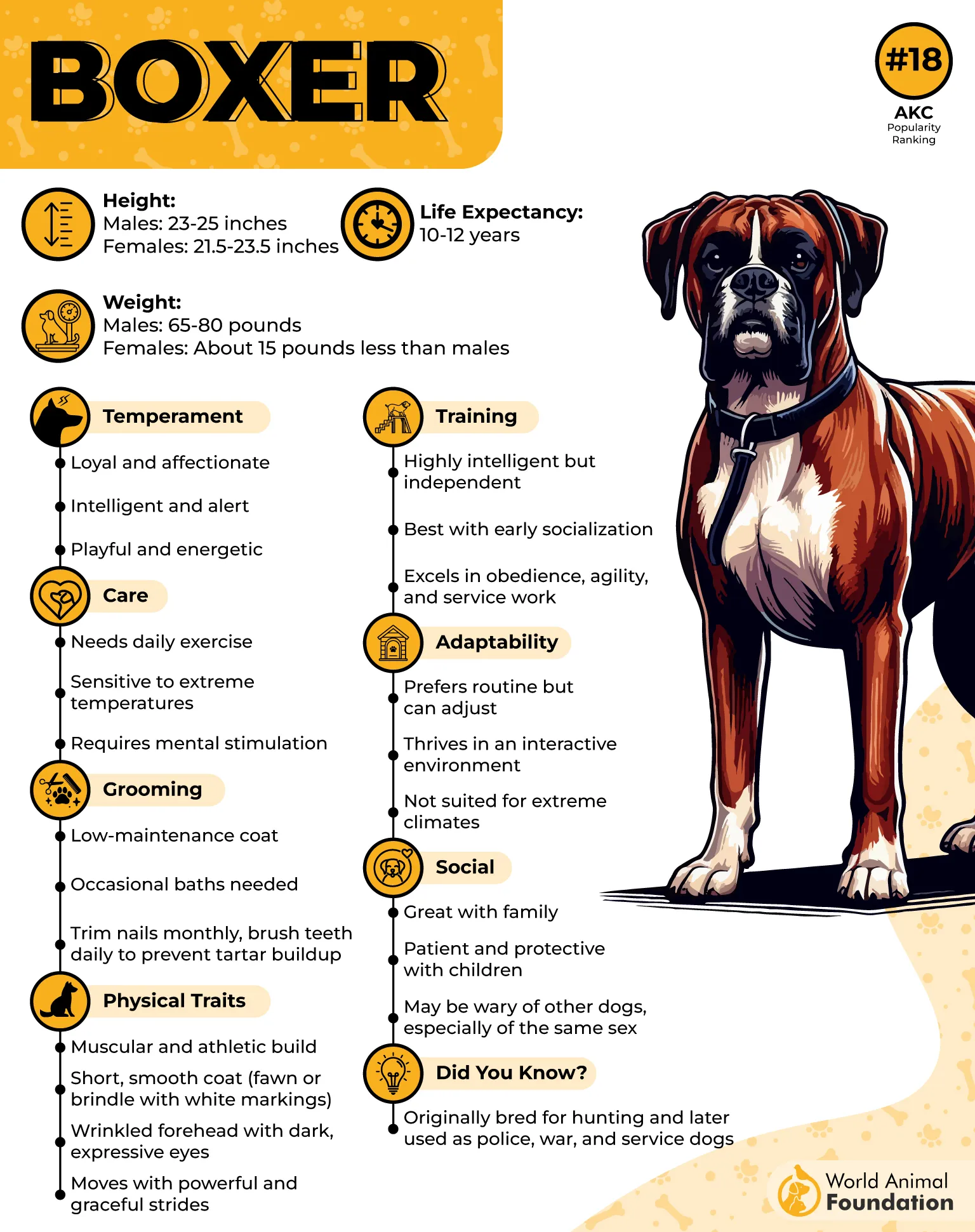
Boxers thrive on games, and training feels like play for them. They respond best when commands are mixed with laughter, toys, and treats, which keeps their enthusiasm high.
Long bouts of fetch, agility work, and brisk walks keep them in balance. Without that outlet, they’ll find their own entertainment—often by running around with a stolen toy, daring you to join in.
They carry things with pride, presenting toys almost ceremonially, as if the moment you take it, the next burst of fun will officially begin.
Fun Fact
Boxers use their front paws to swipe and “box” at the air or at friends, a trait that inspired their name.
7. Australian Shepherd
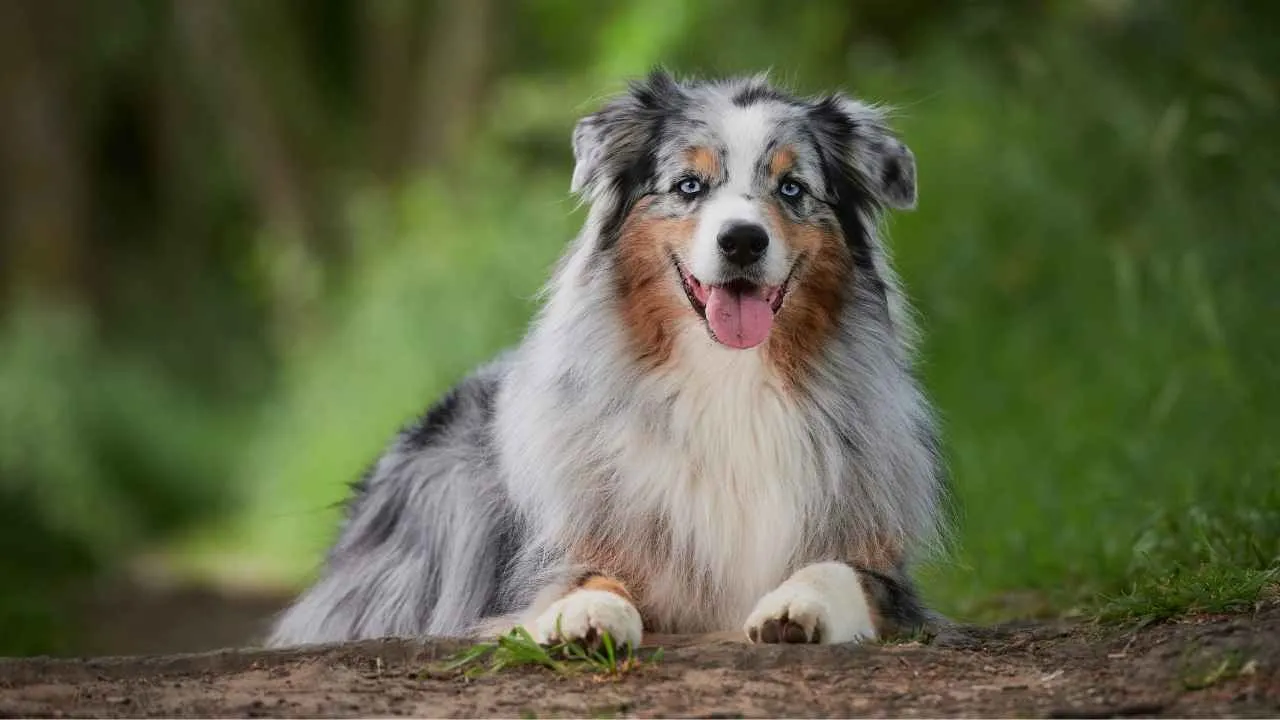
The Australian Shepherd is an energetic herding dog built for long days of work on ranches across the American West. Their quick minds and tireless drive spill into every part of their lives, often resulting in toys being grabbed and “delivered” as if they’re moving a sheep into position.
Their coat comes in striking colors, including the famous blue and red merle, and needs steady brushing to manage shedding and keep it sleek.

Aussies love a job—any job. When they bring you a toy, it feels like they’re reporting for duty, asking you to direct their energy somewhere useful.
They learn rapidly and crave complex challenges, from obedience drills to trick training. Toys become tools in that learning process, turning work into play.
The breed’s enthusiasm is impossible to ignore; they bound through rooms with toys clutched tight, eager eyes fixed on you, ready for the next move.
Fun Fact
Despite their name, Australian Shepherds were developed in the U.S. and only gained popularity after World War II on American ranches.
8. Shetland Sheepdog
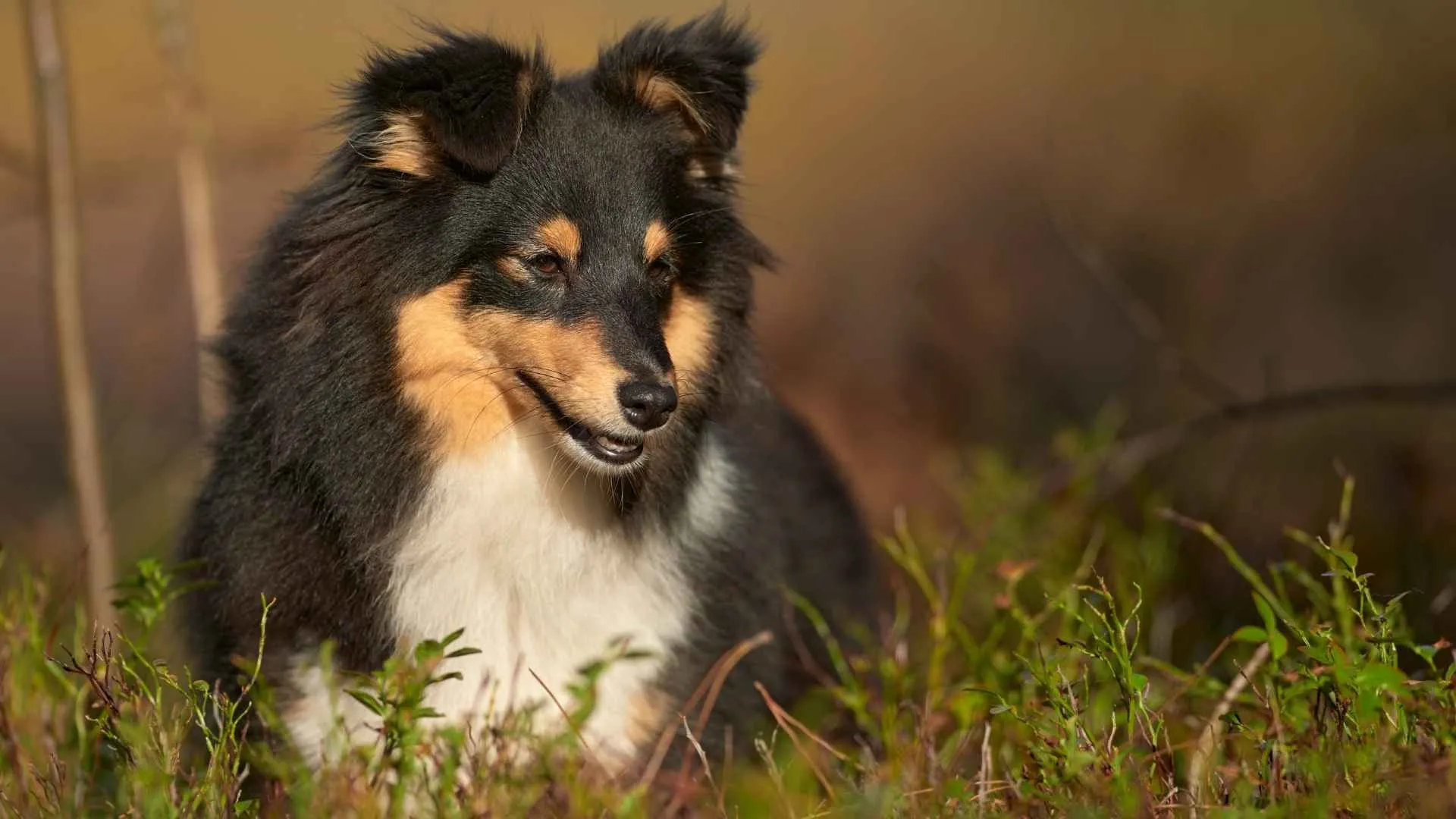
The Shetland Sheepdog, or Sheltie, is a small herder from Scotland’s rugged Shetland Islands, bred to guide tiny flocks of sheep. Their natural instinct to gather and deliver shows in the way they carry toys to their owners, treating the task like an extension of their work.
Their long, silky double coat frames a narrow face and plumed tail. Grooming is a regular commitment—brushing several times a week prevents mats and keeps the coat gleaming.
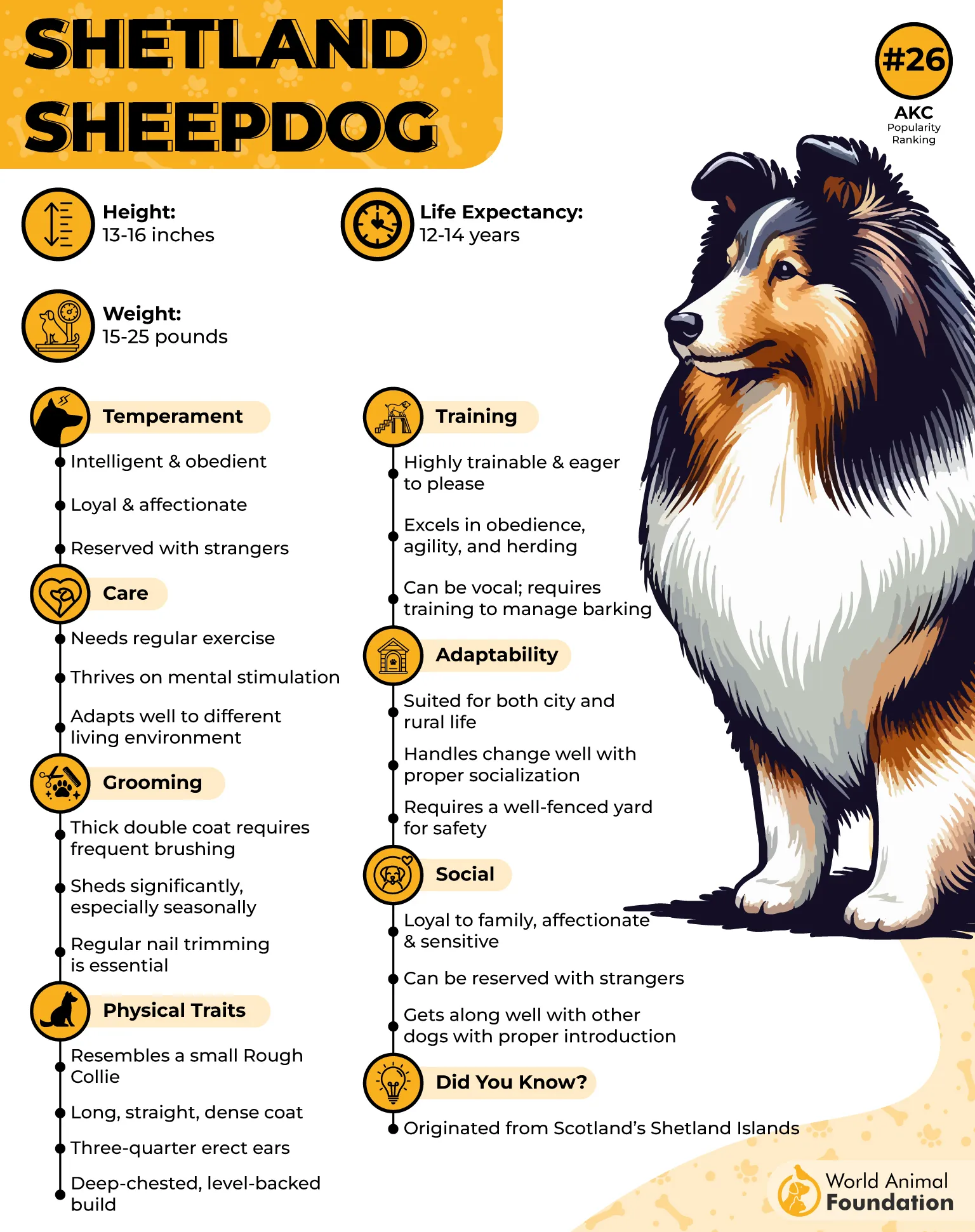
Shelties are sensitive and intuitive, often responding to a glance or gesture before a word is spoken. A toy gently placed at your feet can feel like both a gift and a question.
Training is effortless thanks to their intelligence, and they excel in agility, obedience, and even therapy work.
Their light frame lets them dart and weave, toys swinging from their jaws, a burst of movement that feels joyful and purposeful all at once.
Fun Fact
Shelties are so responsive that they often win top honors in agility competitions against much larger dogs.
9. English Springer Spaniel
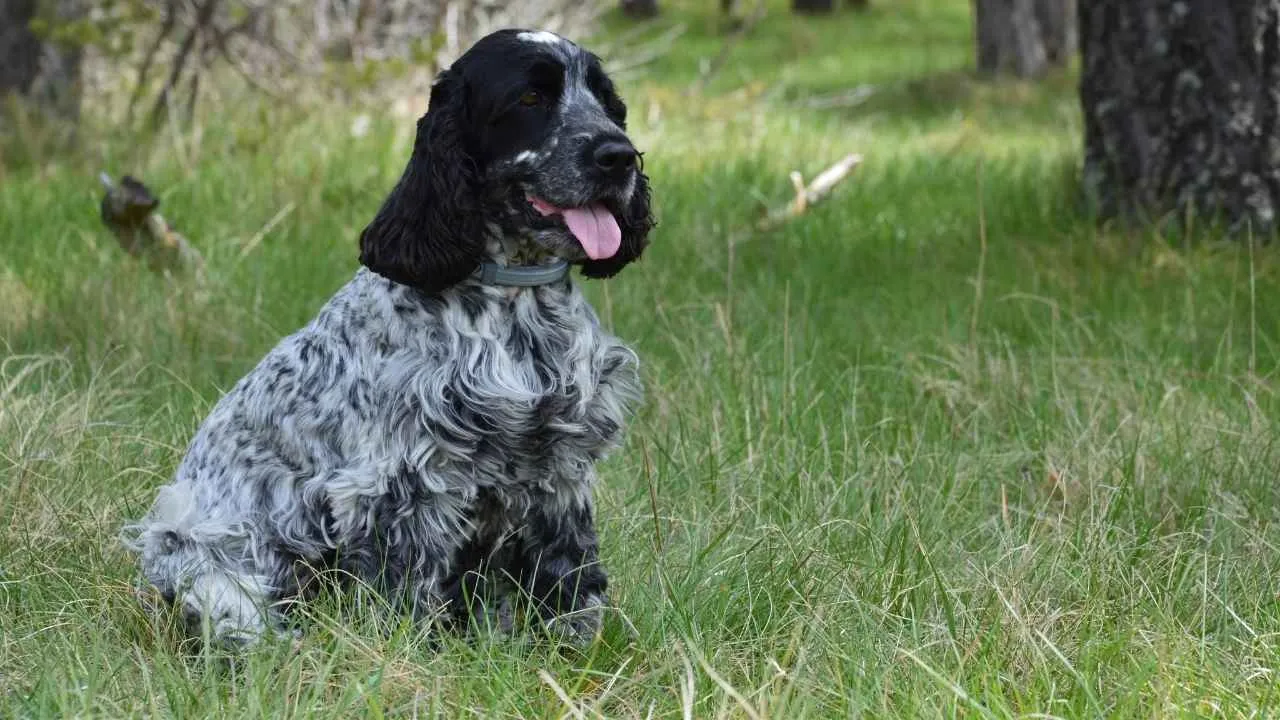
The English Springer Spaniel is a bird dog with centuries of history, bred to “spring” game from dense cover and bring it back to hand. That retrieving instinct lingers in their daily lives, making a toy in their mouth feel as natural as breathing.
Their coats are feathered and silky, with long fur on the ears and legs that needs regular brushing to stay neat.
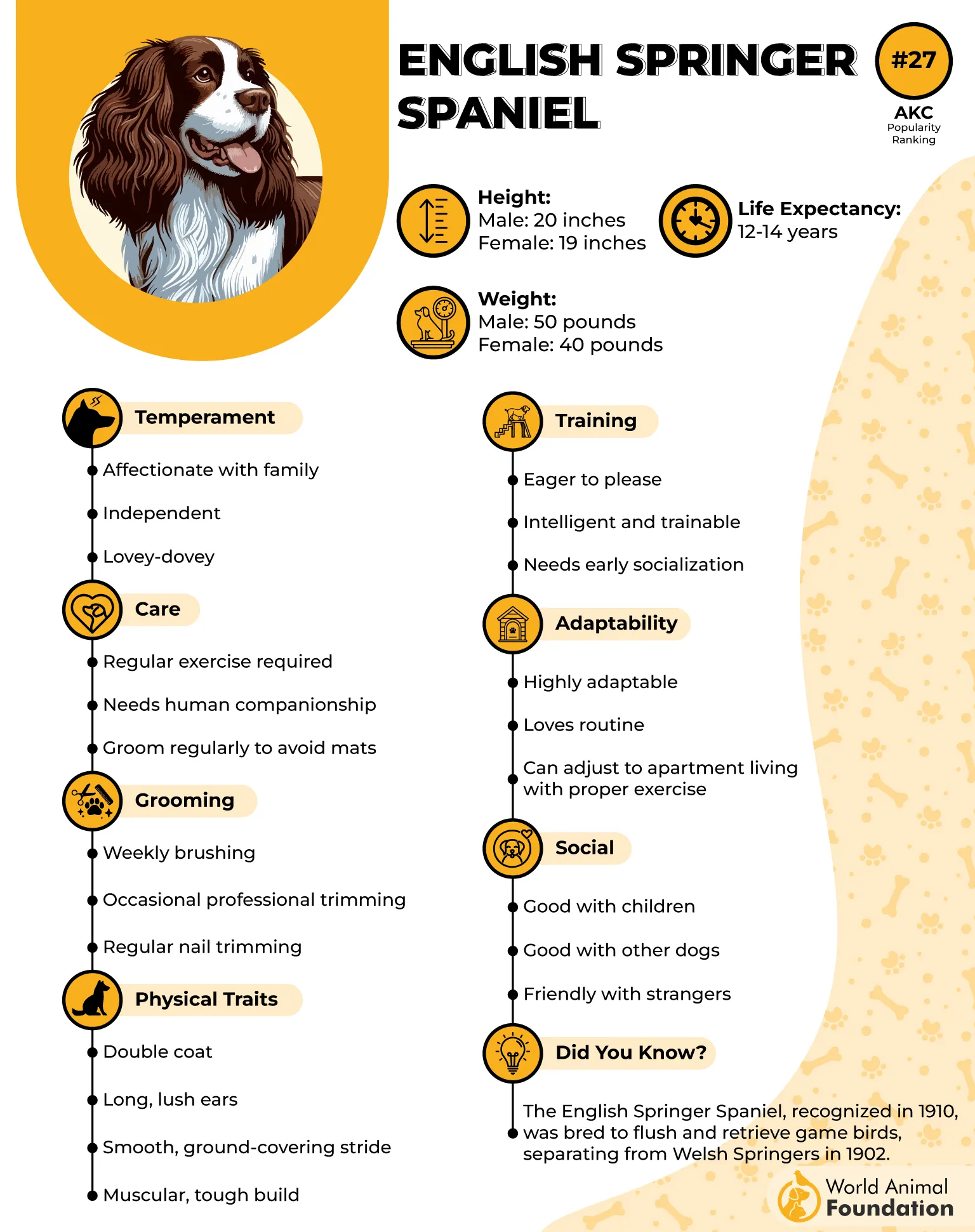
They love games, whether it’s fetch, hide‑and‑seek, or a made‑up challenge, and every toy they present is an invitation for you to join.
Their temperament is famously affectionate—they stick close, leaning into your side or following from room to room, toy dangling as they trail behind.
Even indoors, their energy is unmistakable: bounding across the house, tail wagging, toy bouncing in their teeth like a prize they’re eager to show off.
Fun Fact
English Springer Spaniels earned their name for flushing, or “springing,” birds into the air for hunters.
10. Dalmatian
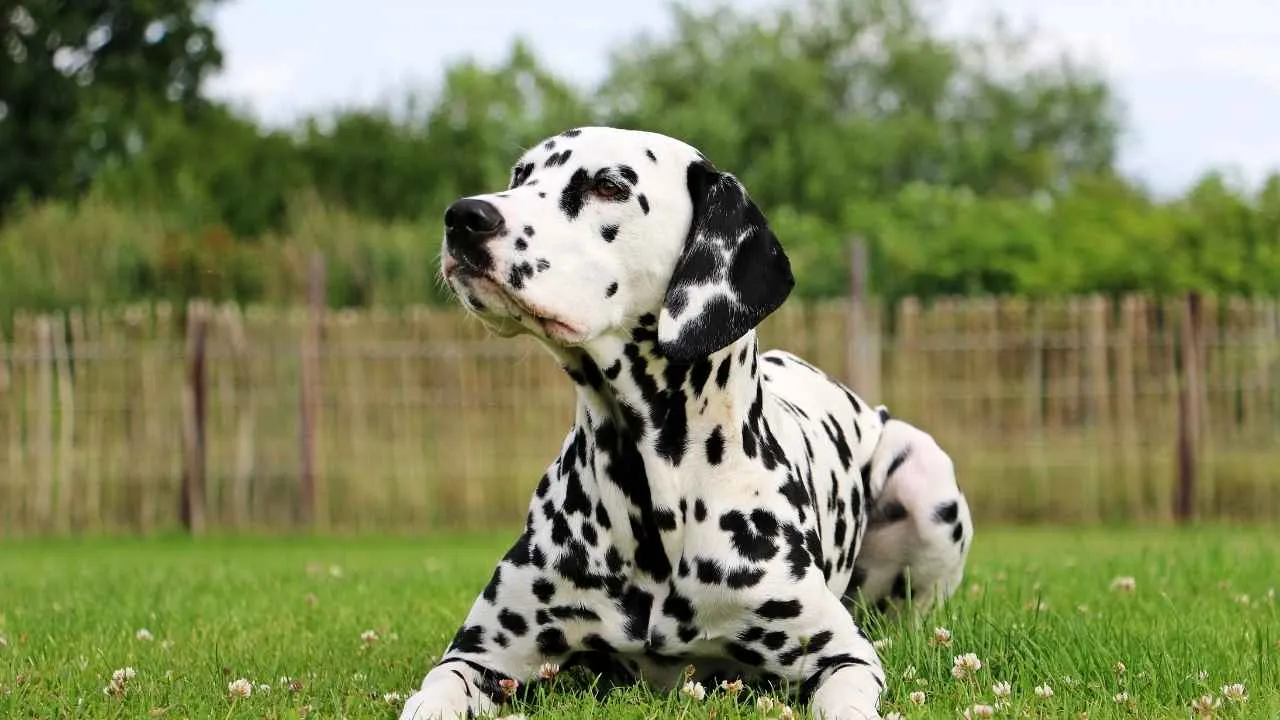
The Dalmatian is instantly recognizable for its striking spotted coat, but the breed’s history is equally vivid. These dogs once ran alongside carriages and fire wagons, clearing the way and guarding the horses at every stop. That background explains why they’re always moving, often grabbing a toy as if to keep their purpose alive even in a quiet living room.
Their short, dense coat requires more care than it looks like—Dalmatians shed steadily all year, and brushing a few times a week helps control the constant sprinkling of hair. Even during grooming, they’re quick to dart off for a toy mid‑session, turning maintenance into a game.
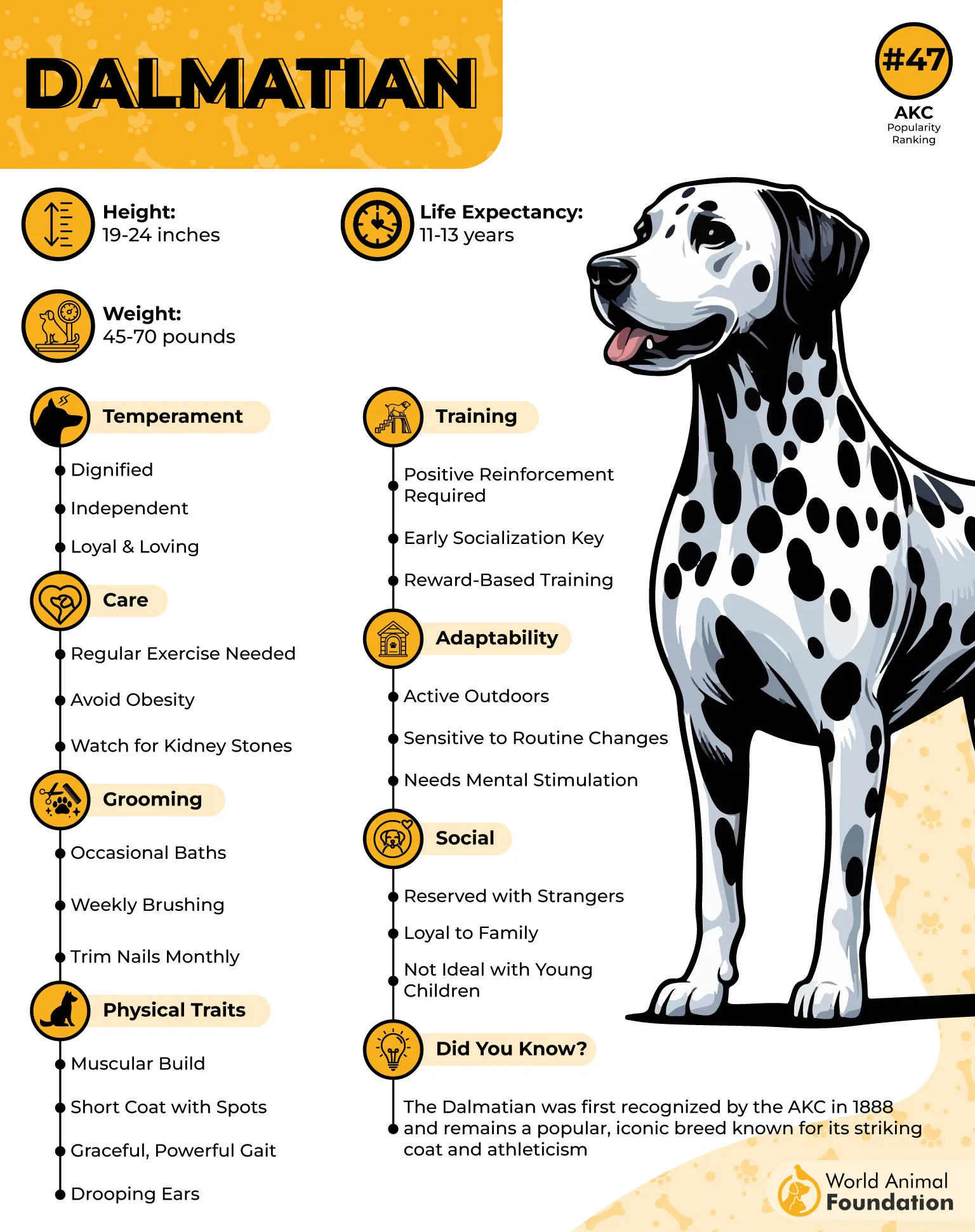
Training is an exercise in balancing their exuberance. They respond well to structure and rewards, and they quickly connect the act of bringing a toy with praise and attention.
There’s an athleticism to every movement—a bounce in the way they cross a room, a flourish in the way they present whatever they’re carrying.
The toy in a Dalmatian’s mouth isn’t simply for play. It’s part of their need to interact, a way to keep busy, and often an affectionate gesture meant to pull you into their world for just one more round.
Fun Fact
Dalmatians were so tied to firehouses that they became an enduring symbol of firefighters across the world.
Conclusion
Dogs love to communicate with the people they trust, and for some, a toy in the mouth is as expressive as words. A pup who trots over with a new toy might be offering a clue about their instinctual behaviors. Retrievers, for instance, can’t help but deliver gifts to their favorite human. These gestures come in different ways: a Boxer might bounce with excitement, a Sheltie might quietly lay a ball near the bed, and a Dalmatian might proudly parade past the front door before dropping a plush animal at your feet.
For puppies, this habit can be shaped with positive reinforcement. When you teach a young dog that bringing something earns a smile or praise, they’ll repeat it, turning play into a language. A “gift” might be their way to engage or an adorable sign that they adore you.
In these moments, you’ll see a good dog at work—ears up when they hear you talk, tail wagging during playtime, ready to sit for attention or stroll on a leash to new places. The effort they make to connect reminds every person how lucky they are to spend time with an animal that truly sees them as a best friend.


